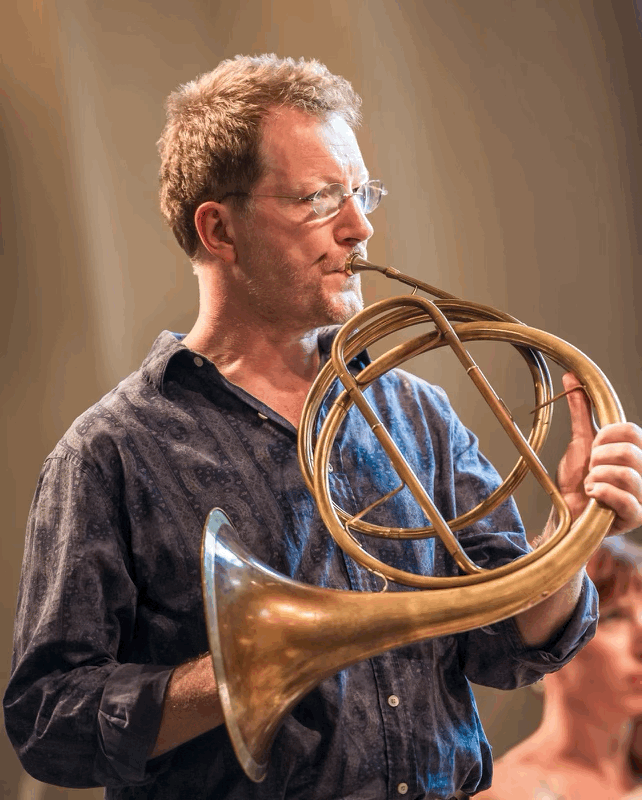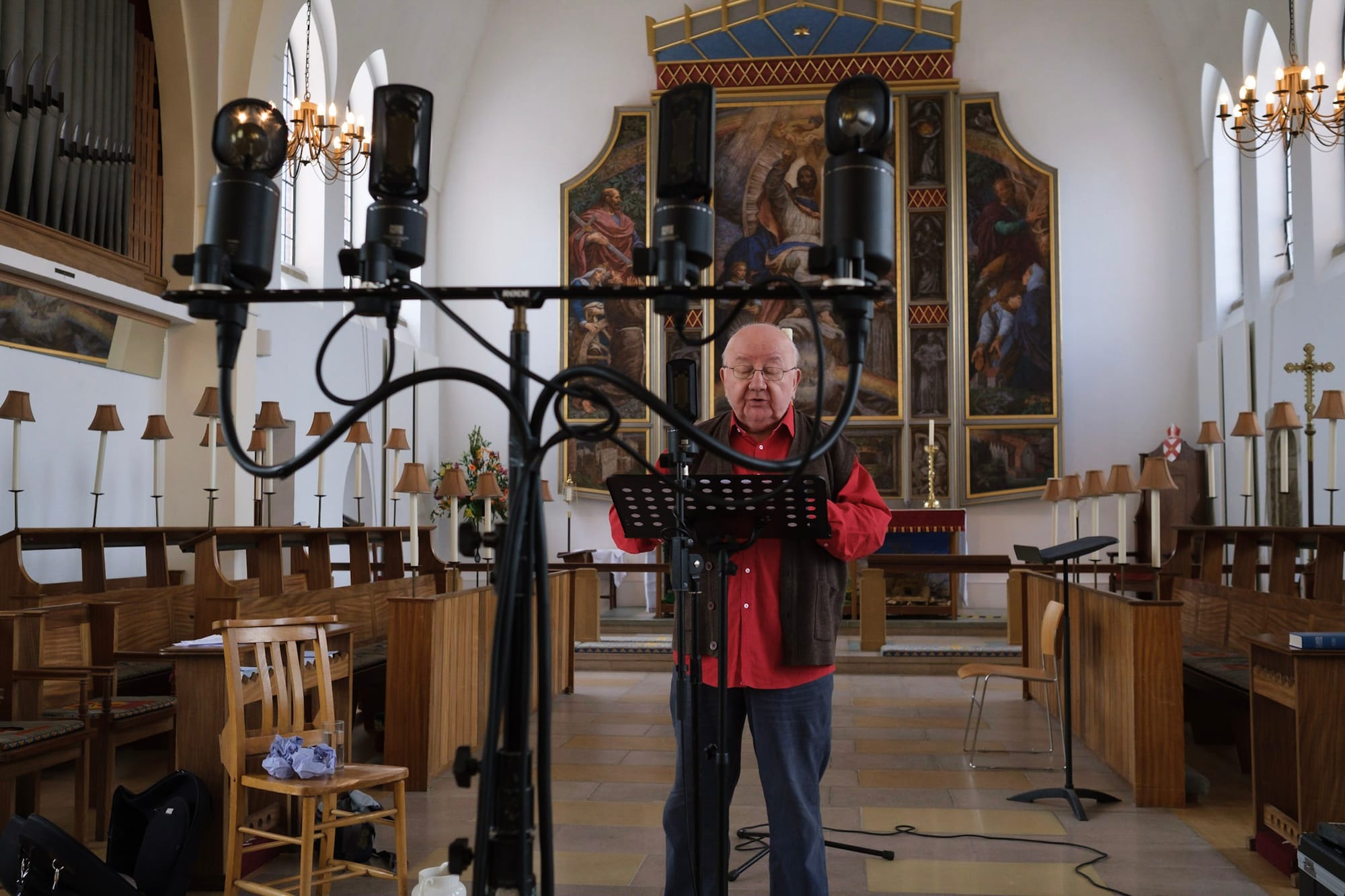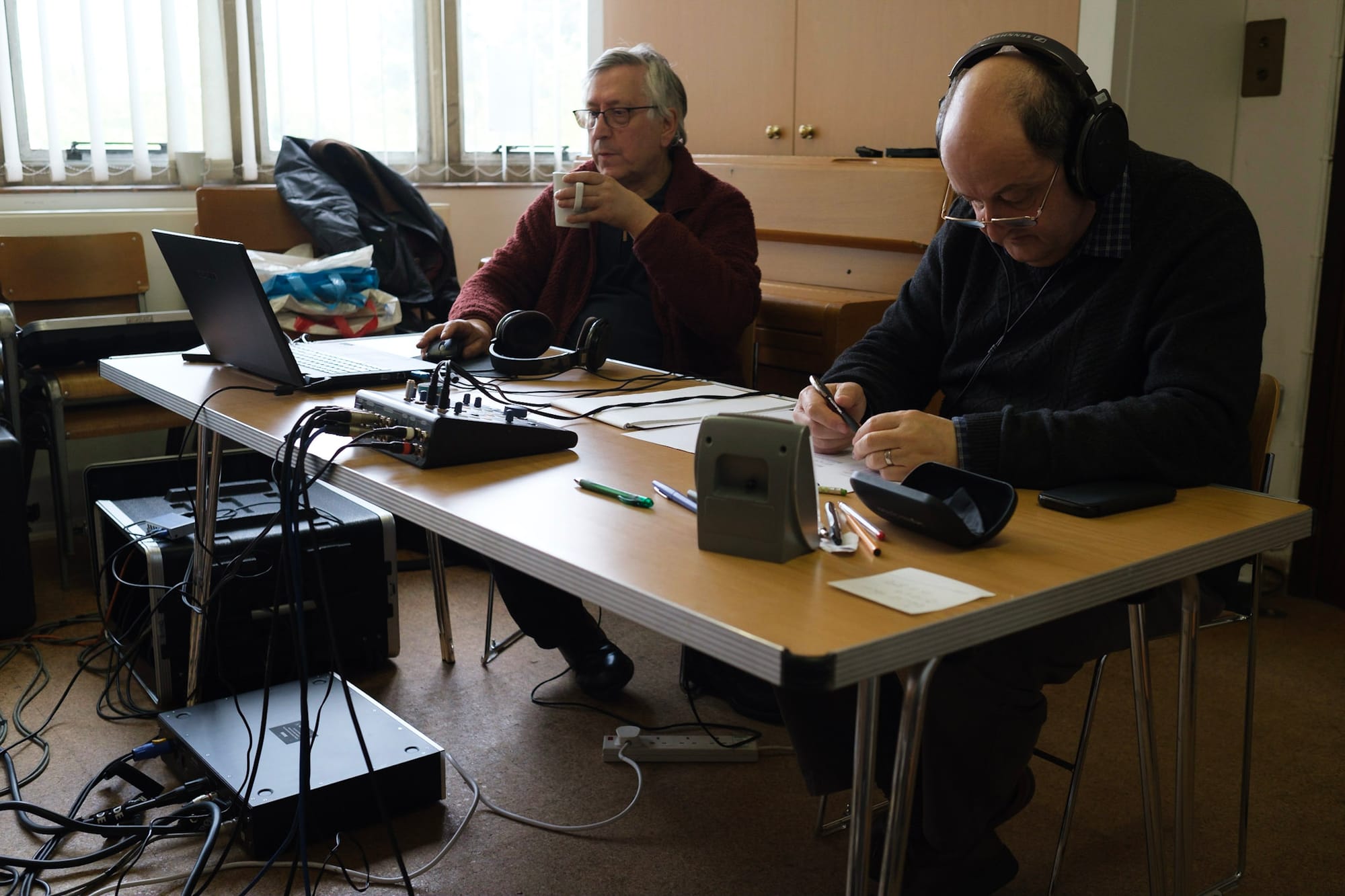Set The Wild Echoes Flying: Pip Eastop's remarkable take on Britten
Many horn players will consider this a superhuman achievement from Eastop. Utterly remarkable

Every horn player knows Benjamin Britten's Serenade for Tenor, Horn and Strings. One of that composer's most beautiful, and cogent, pieces, it often sends tingles of dread in the bravest of hornists; it was, after all, written for Dennis Brain, who single-handedly changed the face of horn playing forever.
Pip Eastop is one of today's finest players. Just as well: his reaction to the Britten, which he calls Set The Wild Echoes Flying, started off as a single-movement encore (after the “Eroica” symphony!). The aim was to be amusing - hence the choice of natural (not valved) horn. Another piece came about through a request from trumpeter Alison Balsam to write something fo her charity, Brass for Africa. As a result of positive feedback from audiences, Eastop expanded the pieces, each splitting (unexpectedly) into two, giving a total of four pieces in toto. His originals held hints of Britten's Serenade, an aspect Eastop also enlarged upon, including the use of poems from the Serenade as spoken interludes between horn movements. And who better than Anthony Halstead (who won't remember, but he sat in on my Guildhall audition all those years ago in the early 1980's!), with whom Eastop recorded the Mozart Concertos for Hyperion?
When it comes to the natural horn and its use in a modern context, Eastop explains:
By the time the classical period was coming to a close the natural horn had reached a state of perfection in its design and build. Sadly, at this point it was displaced, to the point of extinction, by the arrival of the new “modern” horn with its valves and enhanced capabilities. The brilliant concept of having seven (and, later, twelve with the “double” horn) differently pitched natural horns conveniently combined together into one mega-instrument was so exciting for composers that they ceased writing for the natural horn altogether and the whole world completely forgot about it. For a couple of hundred years the natural horn effectively disappeared from our musical culture and could be found only in encyclopedias, museums
and dusty attics. The wipeout was so complete that even music which had been composed specifically for the classical, natural horn came to be played exclusively on valved instruments. I imagine that future generations will look back on this particular fact with curiosity, whereas my generation and several before ours never gave it a thought as we performed musical treasures by Haydn, Mozart, and Beethoven using instruments which those composers could never have imagined.
From the seventies onwards the early music movement began putting the natural horn back on our musical map. This rekindling of knowledge and interest in earlier instruments has had the result that natural horns are now back in production in many workshops around the world and are commonly used in orchestras and ensembles for performing music from the classical period. Horn makers of today are still making slight adjustments to their conical tapers searching for tiny improvements of intonation and resonance, but basically the thing is perfect and has been for hundreds of yeas. Perhaps now is the right time to be bringing the natural horn ou of musical museums and giving it some new music of its own.
There is no doubt Set The Wild Echos Flying requires a transcendental technique. A glance at the score sends this ex-horn player all a-sweat, for sure. Anyone who has lived in fear of the chords in the Weber Concertino for horn and orchestra will find themselves a molten blob in the face of single horn counterpoint of this ilk. Pip Eastop has a magisterial technique (something confirmed by hearing him in Schumann's Konzertstück for four horns and orchestra - in pole position - in a group called "The Guild of Horn Players" at Croydon's Fairfield Halls as part of a concert in memory of Dennis Brain: review).
Speaking of his Set The Wild Echoes Flying, Eastop says “It's a bit extreme” in the following video: master of understatement, he also admits that inserting those spoken texts in between movements makes the whole thing playable (seeing the score, I don't think he's kidding, either). He also explains the work's gestation, around encores for concerts of the London Chamber Orchestra. The video was filmed at St John's Smith Square:
Eastop has taken poems Britten used in his Serenade, which are read on the recording by Anthony Halstead (as mentioned above, himself a noted player, both as soloist and as ex-Principal Horn with the English Chamber Orchestra in that ensemble's Golden Age). As part of his piece, Eastop quotes from Britten's original at times, including the movement that doesn't have the horn in it (which includes a lot of chromatic harmonies performed - 'squeezed,' in Eastop's words - on one instrument). The instrument in question is an Englebert Schmidt natural F-horn: so, no valves. Anyone who has played a modern B flat-F compensating horn will know the so-called "F-side" is the more perilous of the two ...

To hear Britten's Serenade, follow this link and you'll get to Dennis Brain and Peter Pears with Sir Eugene Goosens conducting.
The first movement, “A Monstrous Elephant,” is a study in glissando. Eastop seems to use this as an opportunity to explore the concept of glissando in its various forms (slow, fast, ending with a stopped note and so on) in perhaps an equivalent way - in terms of musical curiosity - that Rebecca Saunders did with the glissando on the piano in her Piano Concerto, Visions and Utterances (see this post). The vernacular is different, though:, and what makes Easto9p's piece interesting is how he uses what are usually grouped together as 'effects' as structural articulators: after a welter of glissandos, suddenly chords appear (created by playing one note and singing though the instrument at the same time) which then leads to an open, pure, ascending perfect fifth horn call culled straight from the “Prologue” of Britten's Serenade which itself then undergoes an intervallic exploration/expansion. The title of this movement comes from Charles Cotton's poem The Evening Quatrains (which of course begins “The Day's grown old, the fainting Sun” and was used for Britten's “Pastoral”)
Halstead reads the poems perfectly and as a horn player conversant with the Britten settings: there is.natural sense of rhythm that seems to hearken back to the music.
It seems almost counter-intuitive to refer to “expressive multiphonics” (they most usually sound like pieces of metal ground together) but that's what we ge here: chords, counterpoint, the lot, in “Turn the Key Deftly” (the line from Keats and heard in the final vocal movement of the Britten, ”Sonnet“). Here's the original, now with Ian Bostirdge; this is the one without horn as (s)he is busy making their way backstage at this point for the off-stage “Epilogue”:
The horn's oscillation around top C and B flat reminds us of a perilous passage in the Britten (although it sounds safe as houses by Eastop; in the original it is a sustained high C descending a semitones, not a tone, to B natural). Halstead's reading of “Sonnet” is unforgettable in itself, slightly fragile, perfectly enunciated, unutterably poignant.
The titular movement is “Blow Bugle Blow (set the wild echoes flying)”. I'll be honest, I wasn't prepared for this. Here's the original (as Eastop points out in his notes, Britten's answer to a Mozart Concerto rondo), and I thought it might be nice to have this movement from Britten's Serenade performed by the reader in Eastop's recording, Anthony Halstead, recorded for Nimbus Records with tenor Jerry Hadley (who sounds as if Hadley's about to wet himself with excitement at the first and last statements of “Goddess, Goddess, excellently bright”) and the English String Orchestra under William Boughton:
Eastop marks his piece, “In a jazz swing style,” and he doesn't disappoint. There's some fantastically edgy hand-stopping here, and Eastop writes himself a top G two octaves above top C (I think - that's a lot of ledger lines on a small score!). It's a lot of fun, anyway.
Finally, “The Horns of Elfland”. That ascending fanfare figure from the Britten “Prologue” returns, now against a drone (here provided by horns but alternatives have been tried over the course of piece's performance history: it can be provided by any instruments). If jazz prevails previously, this is more of a primordial riff on Britten, the drone invoking the ancient. It functions as one hell of a coda.
Set The Wild Echoes Flying is dedicated to Anthony Halstead, a player described by Eastop as “a friend, a colleague, an inspiration, a guide, a teacher ...and the greatest handhorn player in the world.”. Eastop also acknowledges, “The lovely audience of mostly octogenarians for the Sudbury performance in May 2016: for liking Set The Wild Echoes Flying.”.

Interesting that the production team is Tony Faulkner (a Great Man of the UK recording world) and Mike Purton, the latter now a busy recording producer but previously Principal Horn of the Hallé Orchestra; the recording venue was All Saint's, Orpington.
Many horn players will consider this a superhuman achievement from Eastop. Utterly remarkable.
Sheet music fo Pip Eastop's Set the Wild Echoes Flying is now available from Edition db.
Spotify link to a brave new born world below.
